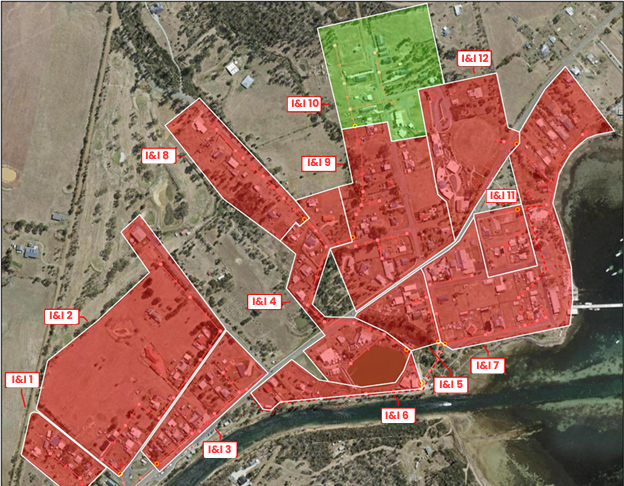Inflow and infiltration (I&I) are persistent challenges for wastewater utilities, particularly in Australia and New Zealand. When excess water enters sewer systems through cracks, faulty pipes, or illegal connections, it not only inflates treatment costs but also strains infrastructure, leading to operational inefficiencies. Utilities are constantly seeking ways to reduce these impacts, and smart wastewater level monitoring solutions have emerged as a powerful tool in tackling I&I issues.
Understanding I&I
Inflow occurs when stormwater or surface water directly enters the sewer system through improperly connected downspouts, storm drains, or manhole covers. Infiltration, on the other hand, happens when groundwater seeps into sewer pipes through cracks, holes, or poorly sealed joints. Both inflow and infiltration increase the volume of water that needs to be treated, placing undue pressure on wastewater treatment plants.
For councils and water utilities, the financial consequences of I&I are significant. Treating excess water that doesn’t belong in the sewer system raises operational costs. In severe cases, I&I can lead to sewer overflows, damage to infrastructure, and environmental pollution—further escalating costs. In response, utilities are turning to technology to manage these issues more effectively.
The Role of Smart Wastewater Level Monitoring
Smart wastewater level monitoring systems are revolutionising how utilities detect and manage I&I. These systems use sensors to monitor water levels in real time across the sewer network. When levels rise unexpectedly during dry weather, it is often a sign of inflow or infiltration. By detecting these anomalies early, utilities can take targeted action to address the root causes.
Real-time data is the backbone of smart level monitoring. Unlike traditional manual inspections, which are labor-intensive and infrequent, smart monitoring continuously tracks wastewater levels. The insights derived from this data allow utilities to be proactive, identifying problem areas before they escalate into costly repairs or system failures. Additionally, smart monitoring systems can be integrated with Geographic Information Systems (GIS) to map problem areas and create detailed profiles of network performance, further improving maintenance and repair strategies.
“Treating excess water that doesn’t belong in the sewer system raises operational costs. In severe cases, I&I can lead to sewer overflows, damage to infrastructure, and environmental pollution—further escalating costs. In response, utilities are turning to technology to manage these issues more effectively.”
Benefits of Reducing I&I with Smart Monitoring Solutions
- Lower Treatment Costs:
One of the most immediate benefits of reducing I&I is the reduction in treatment costs. By minimising the amount of excess water entering the sewer system, utilities can lower the volume of wastewater that requires treatment. Over time, this leads to substantial cost savings.
- Improved System Efficiency:
Excess water entering the system not only increases treatment costs but also decreases overall network efficiency. Smart monitoring allows utilities to identify and mitigate I&I, ensuring that wastewater networks function as designed. This reduces the risk of overflows, backups, and system failures, which are common when sewer systems are overloaded.
- Data-Driven Decision Making:
The data collected from smart level monitoring systems is invaluable for decision-making. Utilities can analyse trends in water levels to predict where future issues might arise, allowing for preventative maintenance. Moreover, this data supports informed investment decisions, such as where to allocate resources for repairs or infrastructure upgrades.
Case Studies in Action
Several utilities across Australia and New Zealand have already adopted smart wastewater level monitoring solutions to great effect. For example, a council in New Zealand implemented a network of level sensors to monitor inflow during storm events. The real-time data enabled them to identify a significant number of illegal stormwater connections that were contributing to inflow. By addressing these issues, the council significantly reduced treatment volumes, saving on operational costs and extending the life of their wastewater infrastructure.
In Australia, a utility deployed smart monitoring systems to target specific areas of their network prone to infiltration. By focusing their efforts on high-priority sections, they were able to reduce infiltration by over 70%, resulting in a noticeable decrease in treatment costs and a more efficient wastewater system overall.

As councils and utilities in Australia and New Zealand continue to face growing pressure to manage I&I, adopting smart wastewater level monitoring solutions offers a path forward. These systems provide real-time data, allowing for proactive management of I&I, which translates into reduced treatment costs, improved efficiency, and enhanced infrastructure longevity. The financial and operational benefits of smart monitoring are clear, and as more utilities embrace these technologies, the positive impacts on wastewater management will only grow.
By leveraging these advanced solutions, utilities can optimise their wastewater networks, reduce unnecessary costs, and better serve their communities. Detection Services is at the forefront of this technological shift, offering innovative solutions that help utilities overcome the challenges of I&I and achieve long-term sustainability.
Get in touch with us today to discuss our range of smart wastewater level monitoring solutions.







